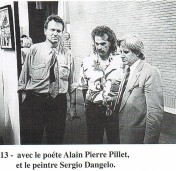
|
Mother Goddes which even date back to the Palaeolithic Period. In relatively more recent times the Mother Goddes of Jhansi (2200-200 B.C.), a terra cotta from Central India conserved in the Allahabad Museum, is a typical example. In this figure with its prominent breasts and legs opened wide, exhibiting the naked and clearly marked vulva, we once again find the ritual character of some prehistoric representations. A sculpture of the Goddess of Fertility with a lotus head (Nagna Kabandha), conserved in the British Museum, instead clarifies the origin of the vulva/knowledge association. This work has numerous allegorical meanings, all of which are already implicit in the fact that the head of the goddess is substituted by a lotus flower. Kabandha is also the name given to a wide, round water jug and makes direct reference to the woman/vase archetypal equivalence. However, and within this context, what is worts dwelling on is the two-fold meaning of the word 'padma' which means both 'lotus flower' and 'vulva'. The lotus flower is the symbol of awareness: it germinates in the muddy darkness at the pond's bottom and grows towards the light and air to then - immaculately - reach the surface of the water where it opens its petals to the sun. The poetic image recalls the fulfilment of uranian knowledge.
|
The vulva/awareness equivalence refers us back to that feminine/knowledge principle. In the Tantras this vulvaknowledge association is confirmed in these terms: "The lower lip is the phallus, the upper lip the vulva, from their copulation is born the word". On his part Neumann points out that the "Positive feminine of the uterus appears like the mouth; thus the female genital organ is attribuited with 'lips'. At the basis of this same symbolic equation the mouth, as 'uterus moved upwards', constitutes the birthplace of breathing, of the word and of the Logos" (1955:170). Let us remember in addition that in the esoteric tradition the vulva, the mouth of truth, is also the passageway which leads to hidden knowledge. It is not at all casual if here our figure has a face of the hoopoe. This fine bird, the male of the species not being exteriorly different from the female, has a warm tawny-red colour. In Islamic literature its long crested and erectile tuft ha been compared to the crown of truth. In the classical Mantigut-taîr (discourse of the birds) it is the hoo-poe which will lead all the world's birds in search of the king. The hoopoe also symbolizes interior inspiration. I do not think it is necessary to clarify what I have said on other occasions: that is, I do not think that Hamlet has consciously drawn from "the treasure room of symbols" (Jung 1955-56:XIII). The Zurich continue
|

